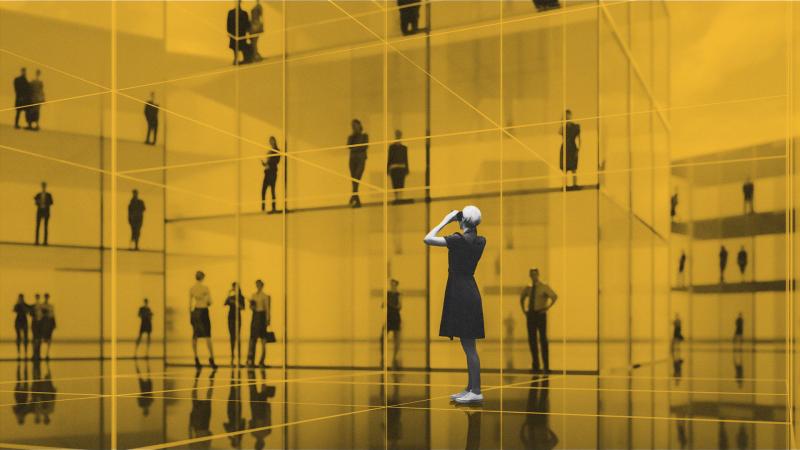Interview with an Expert Series:
Aquent Studios & the Merck & co Team
Aquent Studio’s is our global creative agency which helps clients to rapidly adapt and respond to changing priorities. Leveraging more than a decade of expertise in managing & delivering projects remotely, we put some questions to the Aquent Studio’s team dedicated to Merck, a global pharmaceutical firm where they support the needs of 40+ pharma brands. Here’s what they had to share with us about keeping projects on track, from home.
What’s the most important thing/s to have in place when you’re kicking off a new project that’s being delivered remotely?
We find that all the keys for a standard project are still the most important factors: A kickoff call with all parties involved to discuss expectations, the specific request, resources/research/materials available to execute the project, and timing, as well as setting the proper workflow to meet the project needs. For remote projects, it’s also key to determine the best ways to collaborate- know how each team member communicates and how they can best be reached, as well as understand the best way to share project files and set that up in advance. Keeping individuals and teams connected is of the utmost importance.
What systems or platforms do you use to scope out and prioritise project ideas?
Google suite is Aquent's preferred collaboration tool. Using Hangouts is a great way to share content via screen and use video conferencing to have face to face meetings with colleagues or clients. We also utilize RoboHead to keep track of project tasks and due dates. Many teams use the communication tools built into the platform so all project details are in one place.
What kind of processes are needed to ensure cross functional teams are communicating properly during the lifecycle of a project?
For consistent workstreams, it’s important to set a standard operating procedure with input from team members in each function and follow it consistently with each project. For unique projects, representatives from each function should come together to discuss the proper process. We find it is also helpful to connect team members outside of a current project that have experience or have executed a similar job type. Offering a subject matter expert as a collaborative partner within a job role (design, editor, etc) opens up learning and peer-to-peer sharing, and naturally starts to build extended relationships within a remote network.
Establishing the lifecycle and all steps of the project/process, and sharing with all teams is critical for all to know what part they play in the overall execution of a project. Part of this process is establishing a checks and balance system within the project team and having a project manager and supervisor ensuring all steps are completed. Using RoboHead as a project tracking tool can ensure all parties involved in the project are on task and on track.
Which attributes do you focus on when you’re building a virtual project team?
When building a virtual project team, we look for team members who are disciplined and motivated, strong communicators, good at time management, reliable and responsive, focused, and technically proficient, on top of the specific skills needed for the specific job role.
How do you keep the lines of communication open in the team but not micromanaged?
It’s important to set clear expectations from the outset. This includes defining and following SOPs or project-specific processes. The process should include solid checks and balances, milestone tasks, and set deliverables. Requestors should be clear in their communications about what they need, by when. Design workflows/use tools that allow for requesters to track progress without having to ask for an update.
Having routine check-ins and status calls throughout the duration of the project cycle can give all parties the opportunity to provide status check-ins without feeling micromanaged. It's a good time to address anything that may need more attention or may not be on track for completion at that time.
Team members should find the right cadence for any necessary ad-hoc follow-ups, driven both by the project needs as well as the working style of the team member(s). Provide updates as work progresses so you don’t need to be asked for an update. Hone as relationships form and trust deepens.
How do you build and encourage trust & transparency when managing teams that are remote?
We find it’s critically important to be clear in your expectations and check in for accountability. Check-ins should adjust as the team proves itself, and the goal should be to hold people accountable without micromanaging. Be supportive and prove that you are there to support your team no matter what to foster an environment where team members are not fearful of admitting mistakes.
Having status calls and scheduled check-ins will establish trust within the team as they can share their ongoing progress. This will also force transparency as the milestones and elements tracking towards the due date will be discussed.
What tips can you share for wrapping up a remote project with a retrospective?
Utilizing video conferencing and screen sharing really allows for interpersonal communication as if people were sharing an office. As the time of remote work continues to extend, teams will still feel close while using these tools due to constant interaction and face time.
If you’ve got any follow-up questions around managing projects remotely or outsourcing them completely, then reach out to Aquent Studios who’d be happy to share more about how Aquent Studio’s supports teams across Europe.
Latest.

Celebrating Diversity in Creativity: Embracing International Day of Persons with Disabilities
Benefits & Equality

Don’t fear pay transparency—embrace it.
Industry Trends, Benefits & Equality

AI can help diversity recruiting, but ask these questions first.
Hiring Insights, Benefits & Equality


